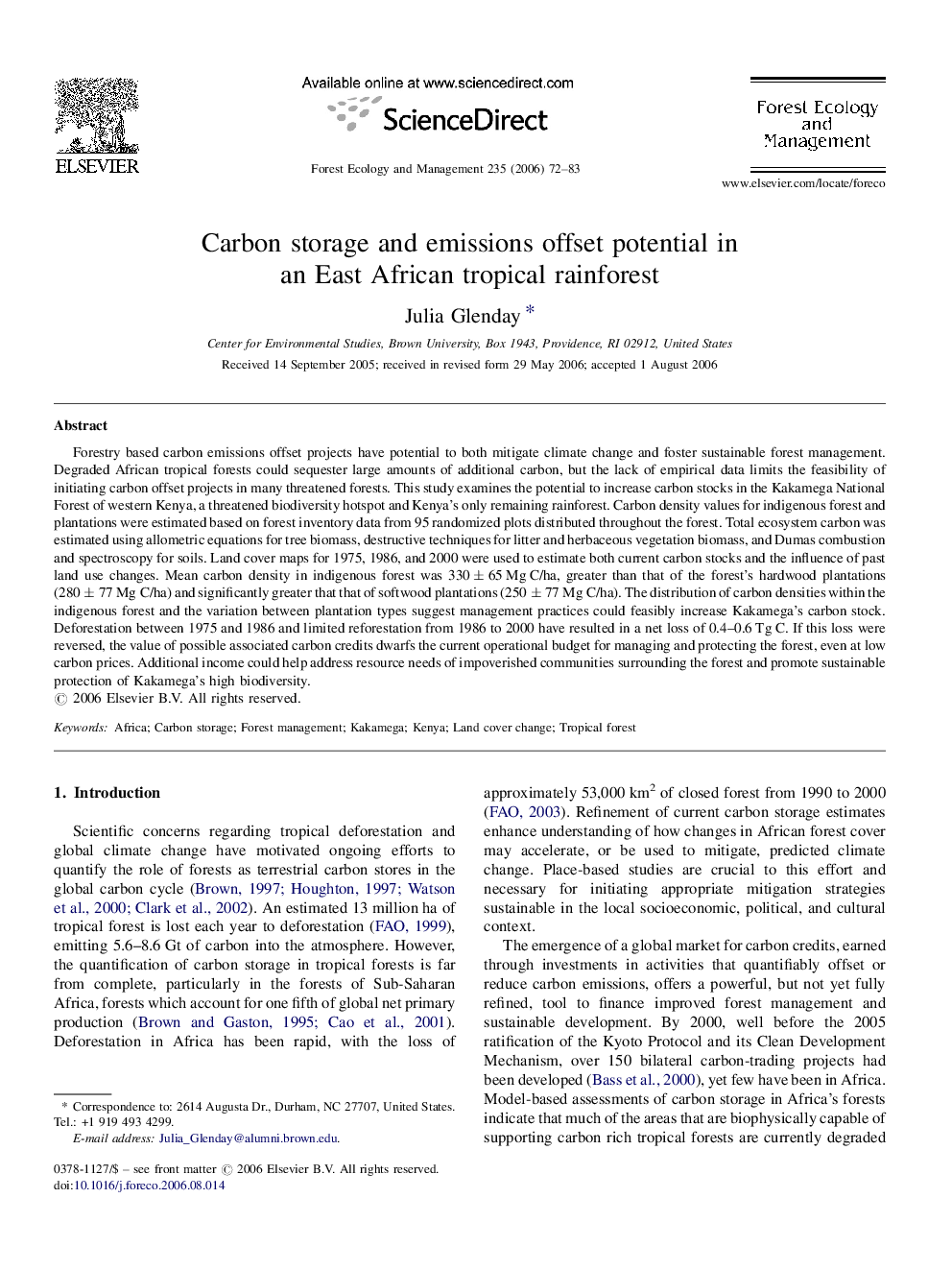| کد مقاله | کد نشریه | سال انتشار | مقاله انگلیسی | نسخه تمام متن |
|---|---|---|---|---|
| 90125 | 159367 | 2006 | 12 صفحه PDF | دانلود رایگان |

Forestry based carbon emissions offset projects have potential to both mitigate climate change and foster sustainable forest management. Degraded African tropical forests could sequester large amounts of additional carbon, but the lack of empirical data limits the feasibility of initiating carbon offset projects in many threatened forests. This study examines the potential to increase carbon stocks in the Kakamega National Forest of western Kenya, a threatened biodiversity hotspot and Kenya's only remaining rainforest. Carbon density values for indigenous forest and plantations were estimated based on forest inventory data from 95 randomized plots distributed throughout the forest. Total ecosystem carbon was estimated using allometric equations for tree biomass, destructive techniques for litter and herbaceous vegetation biomass, and Dumas combustion and spectroscopy for soils. Land cover maps for 1975, 1986, and 2000 were used to estimate both current carbon stocks and the influence of past land use changes. Mean carbon density in indigenous forest was 330 ± 65 Mg C/ha, greater than that of the forest's hardwood plantations (280 ± 77 Mg C/ha) and significantly greater that that of softwood plantations (250 ± 77 Mg C/ha). The distribution of carbon densities within the indigenous forest and the variation between plantation types suggest management practices could feasibly increase Kakamega's carbon stock. Deforestation between 1975 and 1986 and limited reforestation from 1986 to 2000 have resulted in a net loss of 0.4–0.6 Tg C. If this loss were reversed, the value of possible associated carbon credits dwarfs the current operational budget for managing and protecting the forest, even at low carbon prices. Additional income could help address resource needs of impoverished communities surrounding the forest and promote sustainable protection of Kakamega's high biodiversity.
Journal: Forest Ecology and Management - Volume 235, Issues 1–3, 1 November 2006, Pages 72–83